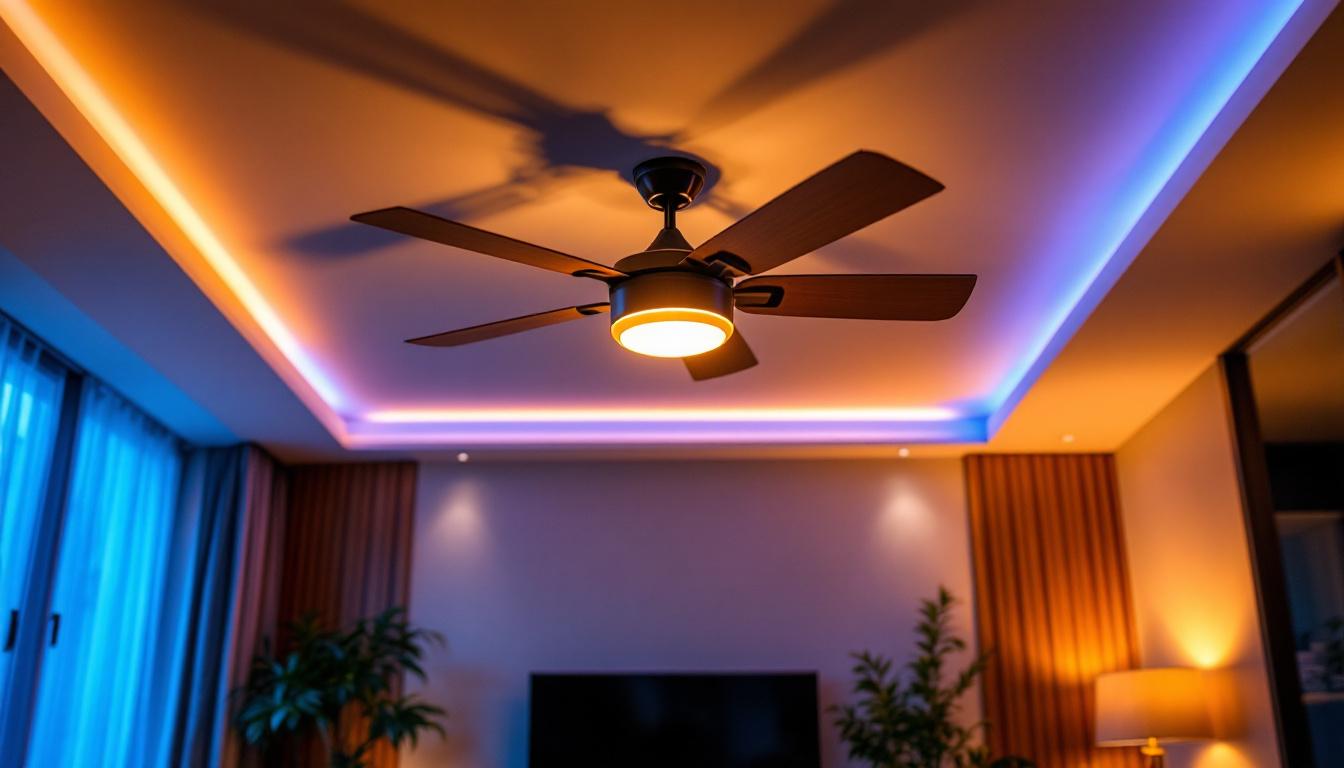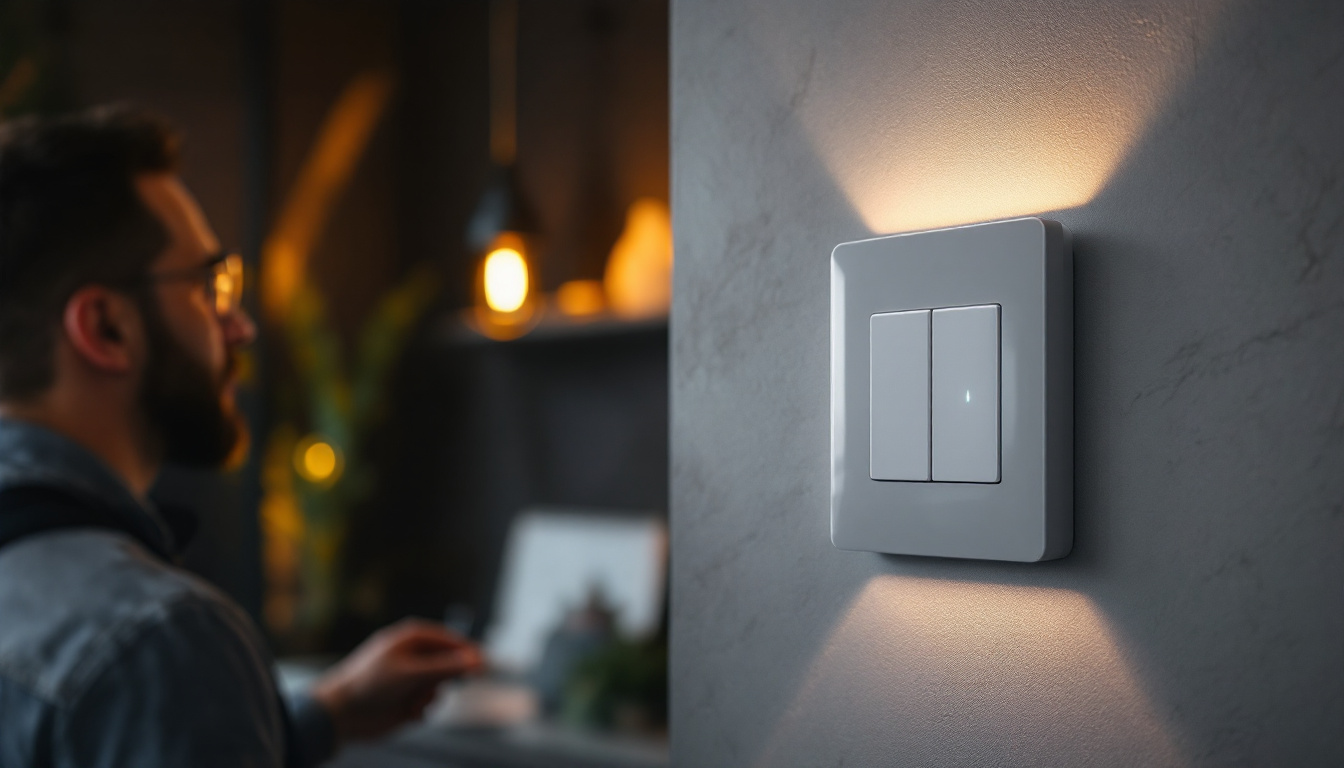
Ceiling fans are an essential component of modern lighting installations, combining functionality with aesthetic appeal. For lighting contractors, understanding the various parts of a ceiling fan is crucial not only for installation but also for ensuring optimal performance and longevity. This article explores the critical components of ceiling fans, their roles in lighting installations, and the importance of proper selection and installation.
To appreciate the significance of ceiling fans in lighting installations, it is necessary to understand their basic components. Each part plays a vital role in the overall functionality and efficiency of the fan.
The motor is the heart of the ceiling fan, responsible for driving the blades and creating airflow. In lighting installations, the motor’s efficiency can directly affect energy consumption. A high-quality motor not only ensures quiet operation but also enhances the fan’s longevity, making it a critical component for contractors to consider. Additionally, advanced motor technologies, such as DC motors, are becoming increasingly popular due to their ability to consume less energy while providing powerful airflow. These motors often come with multiple speed settings, allowing users to customize their comfort level while also being mindful of energy usage.
Ceiling fan blades are designed to move air effectively while also contributing to the fan’s aesthetic appeal. The material, size, and shape of the blades can significantly influence performance. For instance, wooden blades may offer a classic look, while plastic or metal blades can provide a more modern appearance. Selecting the right blades is essential for achieving the desired airflow and style in a lighting installation. Furthermore, the pitch of the blades, which refers to the angle at which they are set, plays a crucial role in determining how much air is moved. A higher pitch can result in more airflow, making it suitable for larger spaces or areas that require more cooling. Designers often consider the overall theme of the room when choosing blade styles, ensuring that they not only perform well but also complement the existing decor.
Many ceiling fans come equipped with a light kit, which can significantly enhance the functionality of the fan. The light kit typically includes fixtures that accommodate various types of bulbs, allowing for customization in brightness and color temperature. When integrating a ceiling fan into a lighting installation, the choice of light kit can impact both the illumination quality and the overall design aesthetic. Additionally, some light kits offer dimmable options, providing flexibility for different activities and moods. For instance, a dimmed light can create a cozy atmosphere for a movie night, while brighter settings are ideal for reading or entertaining. The integration of smart technology in light kits is also gaining traction, allowing users to control brightness and color via mobile apps or voice commands, further enhancing the convenience and adaptability of ceiling fans in modern living spaces.
When it comes to ceiling fans, the quality of the parts used can make a substantial difference in performance and reliability. For lighting contractors, understanding the implications of using high-quality components versus cheaper alternatives is essential. The initial investment in quality parts may seem higher, but the long-term benefits far outweigh the upfront costs, leading to enhanced customer satisfaction and repeat business.
High-quality parts tend to offer greater durability, which is a significant advantage in lighting installations. Ceiling fans are often subjected to various environmental conditions, including humidity and temperature fluctuations. Using durable materials can minimize the risk of wear and tear, ensuring that the fan operates efficiently for years to come. Furthermore, quality components often come with warranties that reflect their reliability, providing peace of mind for both contractors and clients. This assurance can be a deciding factor for customers when choosing between different products and brands, as they are more likely to trust a fan that is backed by a solid guarantee.
Energy efficiency is a critical consideration for both contractors and end-users. Ceiling fans equipped with high-quality motors and components typically consume less electricity, which can lead to significant cost savings over time. Additionally, energy-efficient fans can contribute to a building’s overall sustainability goals, making them an attractive option for environmentally conscious clients. The integration of advanced technologies, such as smart controls and variable speed settings, further enhances the energy-saving capabilities of these fans. This not only allows users to customize their comfort levels but also optimizes energy consumption based on real-time needs, thereby reducing the overall carbon footprint of the installation.
Proper installation of ceiling fans is crucial for maximizing their effectiveness and safety. Lighting contractors must pay attention to several factors during the installation process to ensure optimal performance.
The height at which a ceiling fan is mounted can significantly affect its performance. Ideally, the fan should be installed 8 to 9 feet above the floor for optimal airflow. If the ceiling is particularly high, a downrod may be necessary to lower the fan to the appropriate height. Proper mounting ensures that the fan operates efficiently and provides adequate lighting coverage. Additionally, it is important to consider the size of the room when determining the fan’s height; larger rooms may benefit from fans mounted slightly higher to facilitate better air circulation throughout the space.
Moreover, the angle of the blades also plays a critical role in airflow distribution. Fans with blades that are pitched at a steeper angle can move more air, making them more effective in larger areas. Therefore, when selecting a ceiling fan, contractors should not only consider the mounting height but also the design and specifications of the fan itself to ensure it meets the needs of the room.
Ensuring secure and correct electrical connections is vital for the safety and functionality of ceiling fans. Lighting contractors should follow local electrical codes and guidelines to prevent potential hazards. Additionally, using high-quality wiring and connectors can enhance the reliability of the installation, reducing the likelihood of future issues. It is also advisable to incorporate a dedicated circuit for the ceiling fan, especially if it includes additional features such as integrated lighting or remote control capabilities.
Furthermore, proper grounding is essential to prevent electrical shocks and ensure the longevity of the fan’s motor. Contractors should always check for existing wiring conditions and make necessary upgrades to accommodate the ceiling fan’s requirements. This proactive approach not only enhances safety but also contributes to the overall efficiency of the fan, allowing it to operate smoothly and quietly for years to come.
Even with high-quality parts and proper installation, ceiling fans can encounter issues over time. Being aware of common problems and their solutions can help contractors provide better service to their clients.
A noisy ceiling fan can be a significant annoyance for homeowners. Common causes of noise include loose blades, improper installation, or a malfunctioning motor. Contractors should ensure that all components are securely fastened and that the motor is functioning correctly to minimize noise during operation.
If a ceiling fan is not providing adequate airflow, it may be due to several factors, including blade pitch, motor performance, or obstruction from nearby objects. Contractors should assess the installation to determine the cause and make necessary adjustments, such as changing the blade angle or relocating the fan.
Selecting the appropriate ceiling fan for a lighting installation involves considering various factors, including the size of the room, style preferences, and specific lighting needs. Contractors play a critical role in guiding clients through this decision-making process.
The size of the room is a key factor in determining the size of the ceiling fan. A fan that is too small may not provide adequate airflow, while one that is too large can overwhelm the space. As a general rule, a fan with a blade span of 36 to 42 inches is suitable for small rooms, while larger spaces may require fans with spans of 52 inches or more. Ensuring the right size contributes to both comfort and efficiency in lighting installations.
Ceiling fans come in a wide range of styles, from traditional to contemporary. The choice of design should complement the overall aesthetic of the room. Lighting contractors should work closely with clients to understand their preferences and recommend fans that align with their vision while also considering the functional aspects of the installation.
Regular maintenance is essential for ensuring the longevity and performance of ceiling fans. Contractors should educate clients on the importance of care and provide guidance on how to maintain their fans effectively.
Dust and debris can accumulate on ceiling fan blades over time, affecting airflow and efficiency. Regular cleaning is necessary to maintain optimal performance. Contractors can recommend specific cleaning methods and products that are safe for the materials used in the fan.
Encouraging clients to inspect their ceiling fans periodically can help identify potential issues before they become significant problems. Contractors should advise clients on what to look for, such as unusual noises or wobbling, and provide repair services as needed. Proactive maintenance can significantly extend the lifespan of the fan and enhance its performance.
The importance of ceiling fans in lighting installations cannot be overstated. Understanding the various parts and their functions, as well as the implications of quality and installation practices, is critical for lighting contractors. By selecting the right components, ensuring proper installation, and providing ongoing maintenance, contractors can enhance the performance and longevity of ceiling fans, ultimately leading to greater client satisfaction.
As the demand for energy-efficient and aesthetically pleasing lighting solutions continues to grow, ceiling fans will remain a vital element in modern installations. By staying informed about the latest trends and technologies in ceiling fan design and functionality, lighting contractors can position themselves as experts in the field, providing valuable insights and solutions for their clients.
Ready to elevate your lighting installations with the highest quality ceiling fan parts? Look no further than LumenWholesale, where we provide contractors with spec-grade lighting products at unbeatable wholesale prices. Our selection is designed to meet the most rigorous industry standards, ensuring you deliver reliable and high-performance lighting solutions to your clients. With LumenWholesale, bulk buying is a breeze, and with free shipping, you can rest assured that you’re getting the best value without any hidden costs. Don’t compromise on quality or price. Wholesale Lighting at the Best Value is just a click away. Upgrade your lighting projects with LumenWholesale today.

Discover the top sources and insider tips for purchasing LED lights as a smart lighting contractor.

Discover how a lightswitch timer can revolutionize your lighting projects in just five minutes.

Explore the cutting-edge science behind smart home light switches and discover how lighting contractors can harness this technology to revolutionize modern living spaces.

Discover how ceiling fan control systems can enhance energy efficiency and boost profitability in lighting installations.